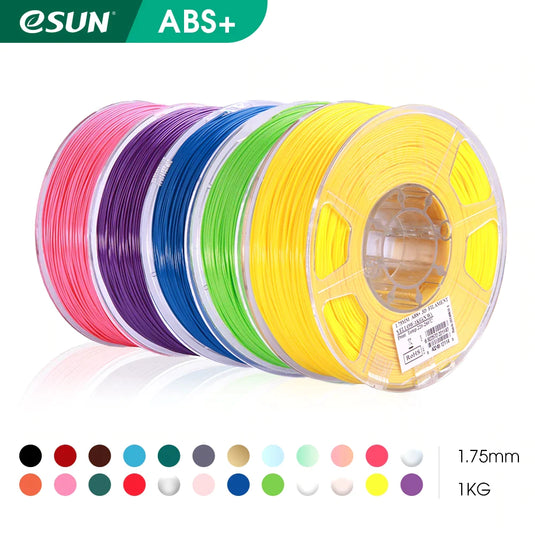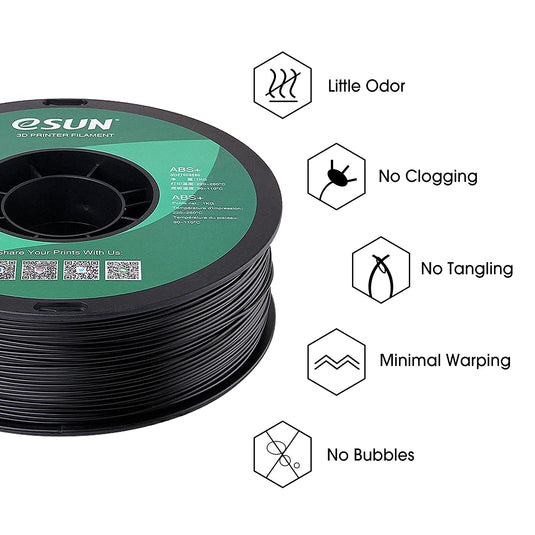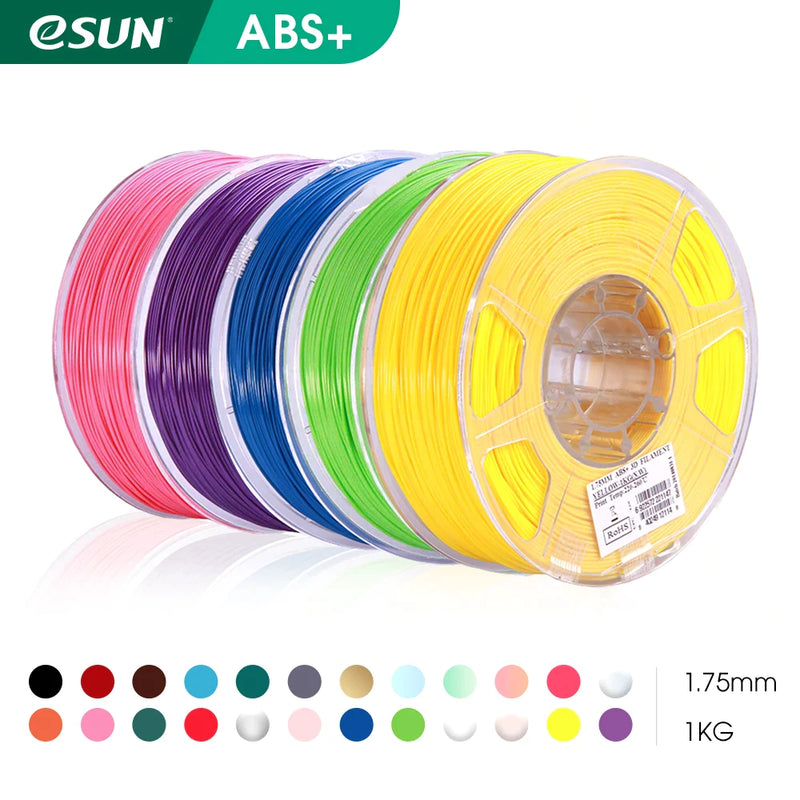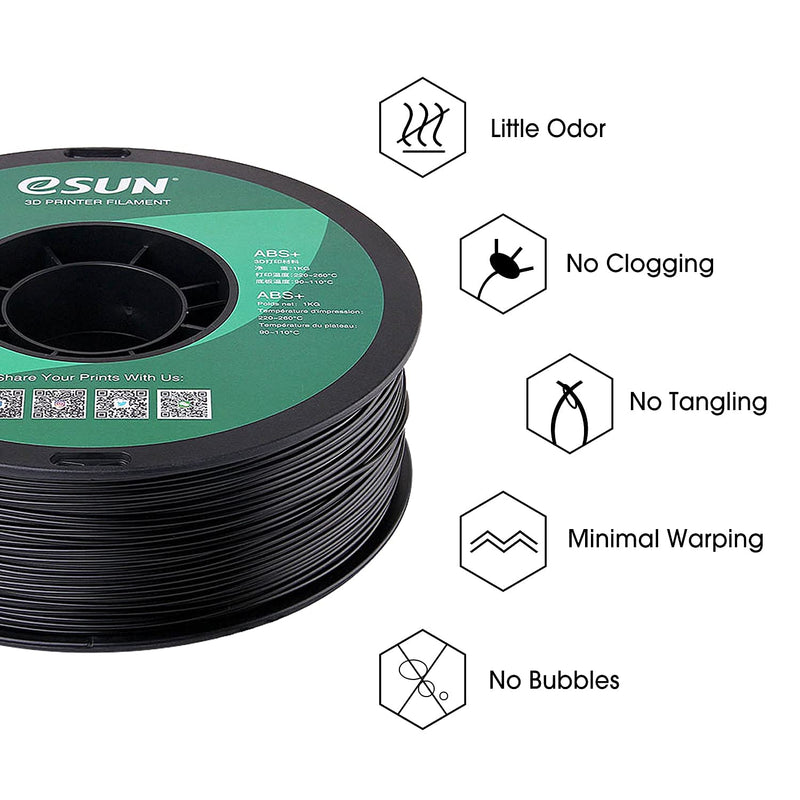Based on the modification of ABS material, it has higher mechanical properties, lower odor and lower shrinkage rate than conventional ABS materials. With high toughness and high impact resistance, ABS+ can be used to print sturdy and durable parts; low VOC volatile content, low odor during printing, comfortable printing without pressure; low shrinkage, not easy to warp and crack during printing.
Features
- Heat resistance
- Sturdy and durable
- High toughness
- Low odor
- Low shrinkage
- High impact resistance
- Excellent printability
Technical Datasheet can be found here!
Notes:
- The shrinkage rate of ABS+ material is large, so you should pay attention to heat preservation when printing and print in a printer with a closed chamber.
- The cooling of ABS+ is slightly worse. You can turn on a fan to improve the printing effect or reduce the drape angle structure in the model; or try to reduce the speed to print.
| Filament Properties Table | |
|---|---|
| 3D PRINTING FILAMENT | ABS+ |
| Density(g/cm3) | 1.06 |
| Heat Distortion Temp(℃,0.45MPa) | 73 |
| Melt Flow Index(g/10min) | 15(220℃/10kg) |
| Tensile Strength(MPa) | 40 |
| Elongation at Break(%) | 30 |
| Flexural Strength(MPa) | 68 |
| Flexural Modulus(MPa) | 1203 |
| IZOD Impact Strength(kJ/㎡) | 42 |
| Durability | 8/10 |
| Printability | 8/10 |
| Recommended printing parameters | |
| Extruder Temperature(℃) | 230 – 270℃ Recommended temperature:240℃ |
| Bed temperature(℃) | 95 – 110°C |
| Fan Speed | 0% |
| Printing Speed | 40 – 100mm/s |
| Heated Bed | Required |
| Recommended Build Surfaces | High temperature tape, PVP solid glue |
| Feature | |
| Flexible | —— |
| Elastic | —— |
| Impact Resistant | √ |
| Soft | —— |
| Composite | —— |
| UV Resistant | —— |
| Water Resistant | —— |
| Dissolvable | —— |
| Heat Resistant | √ |
| Chemically Resistant | —— |
| Fatigue Resistant | —— |
| Need drying | —— |
| Heated Bed Required | √ |
| Print recommend | Print in an enclosed space |
Want to buy in bulk?
Custom Requirements?
Discussion Forum
Feel free to ask questions, share tips or report issues.




